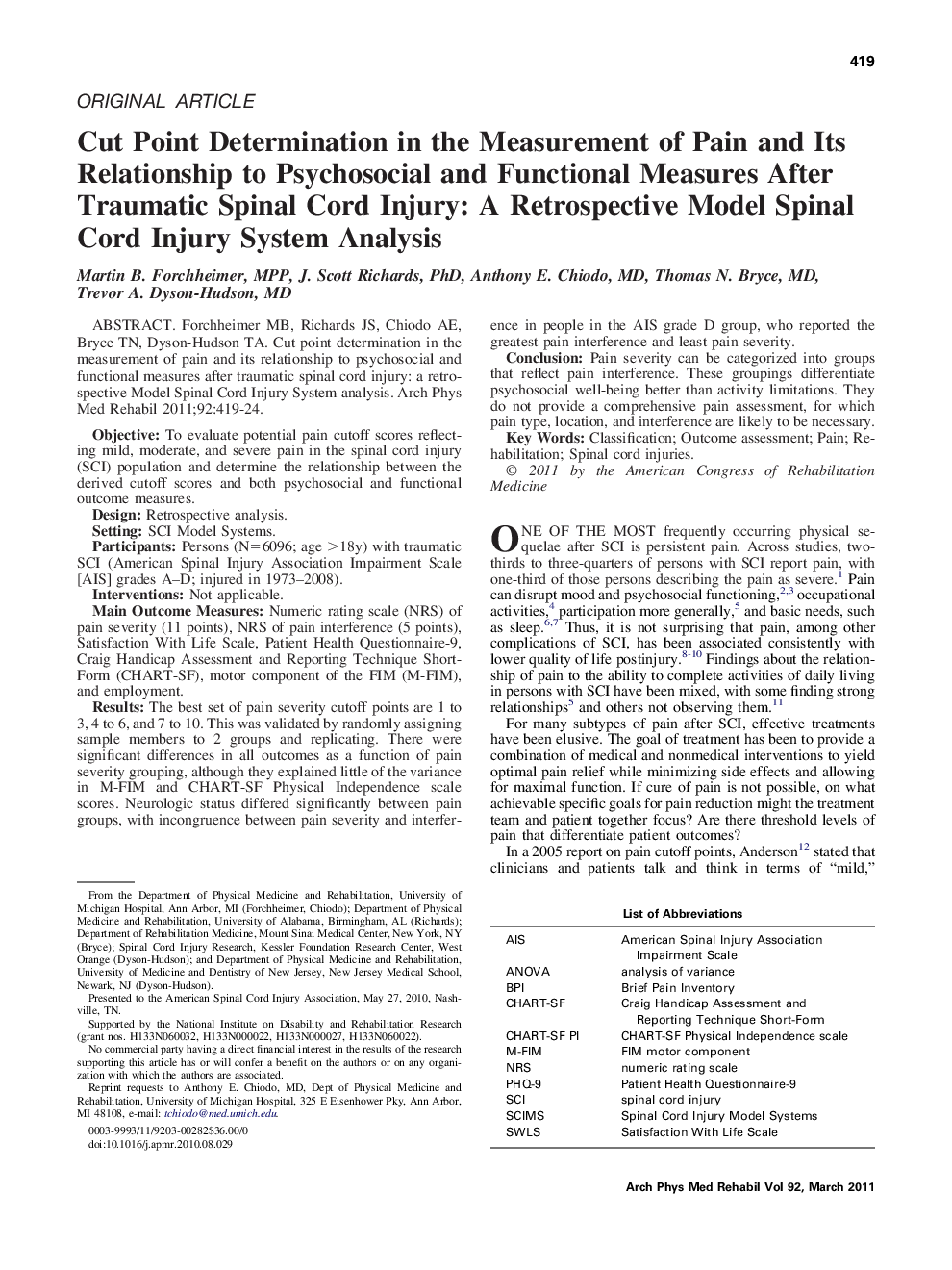| کد مقاله | کد نشریه | سال انتشار | مقاله انگلیسی | نسخه تمام متن |
|---|---|---|---|---|
| 3450285 | 1595742 | 2011 | 6 صفحه PDF | دانلود رایگان |

Forchheimer MB, Richards JS, Chiodo AE, Bryce TN, Dyson-Hudson TA. Cut point determination in the measurement of pain and its relationship to psychosocial and functional measures after traumatic spinal cord injury: a retrospective Model Spinal Cord Injury System analysis.ObjectiveTo evaluate potential pain cutoff scores reflecting mild, moderate, and severe pain in the spinal cord injury (SCI) population and determine the relationship between the derived cutoff scores and both psychosocial and functional outcome measures.DesignRetrospective analysis.SettingSCI Model Systems.ParticipantsPersons (N=6096; age >18y) with traumatic SCI (American Spinal Injury Association Impairment Scale [AIS] grades A–D; injured in 1973–2008).InterventionsNot applicable.Main Outcome MeasuresNumeric rating scale (NRS) of pain severity (11 points), NRS of pain interference (5 points), Satisfaction With Life Scale, Patient Health Questionnaire-9, Craig Handicap Assessment and Reporting Technique Short-Form (CHART-SF), motor component of the FIM (M-FIM), and employment.ResultsThe best set of pain severity cutoff points are 1 to 3, 4 to 6, and 7 to 10. This was validated by randomly assigning sample members to 2 groups and replicating. There were significant differences in all outcomes as a function of pain severity grouping, although they explained little of the variance in M-FIM and CHART-SF Physical Independence scale scores. Neurologic status differed significantly between pain groups, with incongruence between pain severity and interference in people in the AIS grade D group, who reported the greatest pain interference and least pain severity.ConclusionPain severity can be categorized into groups that reflect pain interference. These groupings differentiate psychosocial well-being better than activity limitations. They do not provide a comprehensive pain assessment, for which pain type, location, and interference are likely to be necessary.
Journal: Archives of Physical Medicine and Rehabilitation - Volume 92, Issue 3, March 2011, Pages 419–424